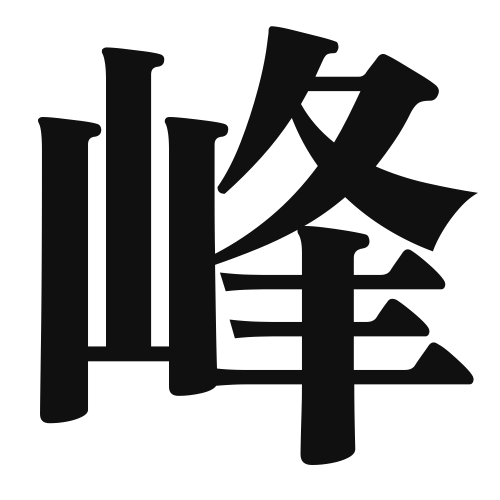1. Overview of Meaning
The kanji “峰” (mine) means “peak” or “summit.” It refers to the highest point of a mountain or hill, symbolizing elevation and prominence.
2. Formation and Radical
Formation of the Kanji: The kanji “峰” is a compound character, combining elements that represent both the concept of a mountain and its peak. It is classified as a compound ideograph (会意文字), as it combines the meanings of its components.
Radical: The radical for “峰” is “山” (yama), which means “mountain.” This radical is commonly found in kanji related to mountains and elevation.
3. Examples of Usage
Common Words and Phrases:
- 峰 (mine) – peak
- 山峰 (sanpou) – mountain peak
- 峰道 (homemichi) – mountain path
Example Sentences in Daily Conversation:
- 「あの峰はとても美しいです。」(That peak is very beautiful.)
- 「私たちは峰を目指して登ります。」(We will climb towards the summit.)
4. Synonyms and Antonyms
Similar Kanji:
- 頂 (itadaki) – summit or top, often used in a more formal context.
- 高 (takai) – high, which describes elevation but does not specifically refer to a peak.
Antonyms:
- 谷 (tani) – valley, which represents a low area between hills or mountains.
5. Cultural and Historical Background
Relation to Japanese Culture: The concept of “峰” is significant in Japanese culture, often associated with nature, spirituality, and the beauty of landscapes. Mountains are revered in Japan, and many shrines are located on or near peaks.
Proverbs and Idioms:
- 「山の峰を越える」(to cross the mountain peak) – meaning to overcome a significant challenge.
- 「峰の上に立つ」(to stand on the peak) – symbolizing achieving a high position or success.
